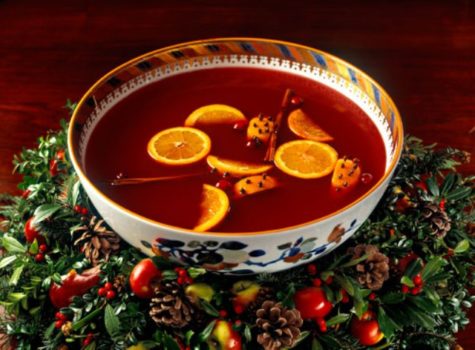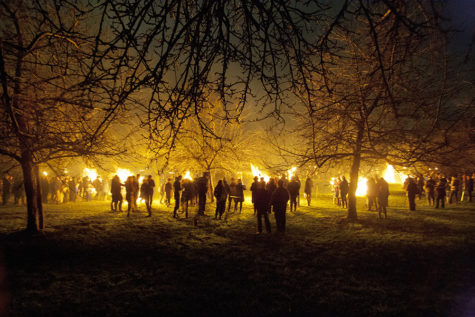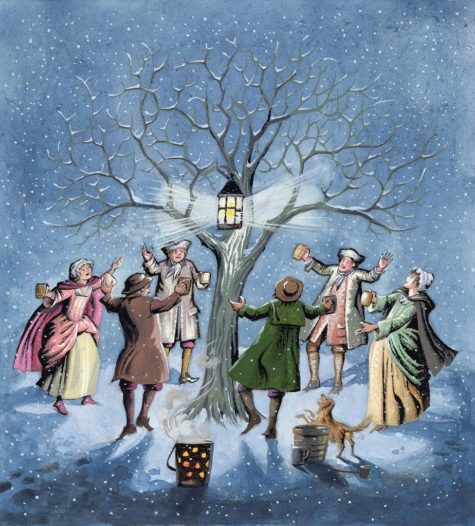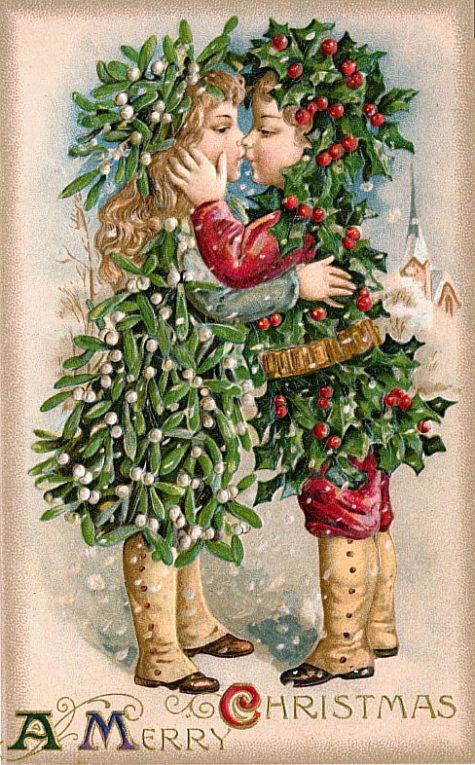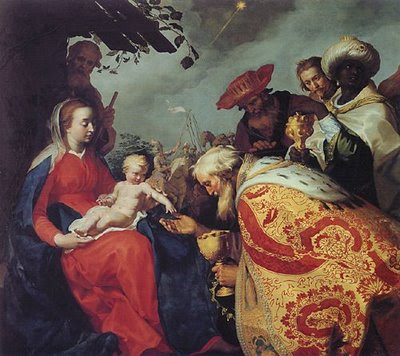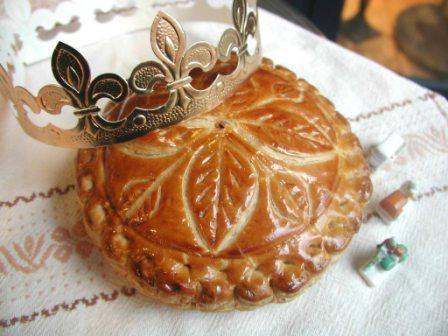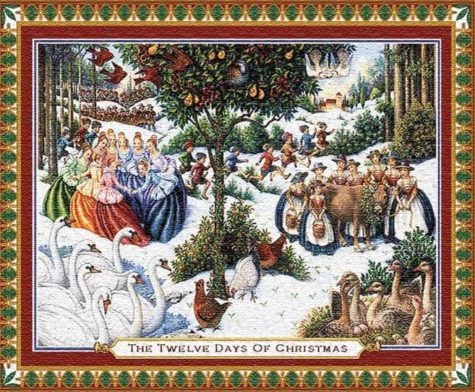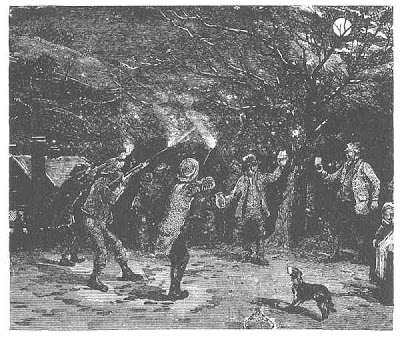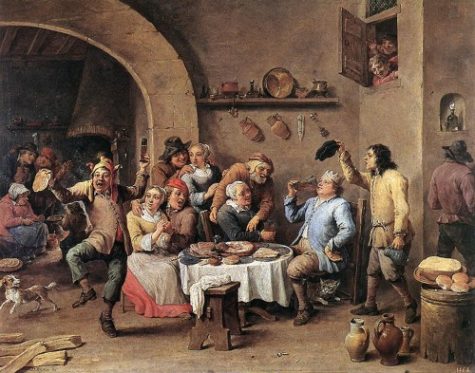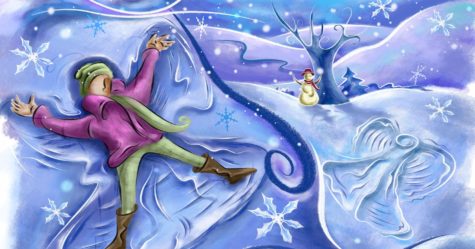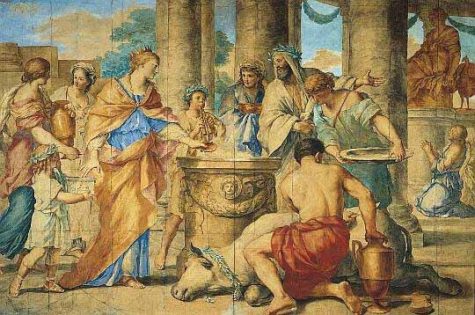Twelve Days of Christmas
“Welcome everything! Welcome all alike what has been, and what never was, and what we hope may be, to your shelter underneath the holly, to your places around the Christmas fire, where what is sits.”
~Charles Dickens
The wassail—a centuries old tradition from Great Britain—is a joy-filled party celebrating the Winter Solstice, Christmastime and happy tidings. Indeed, many of the traditions of this likeable event are the originators of well-known seasonal classics (like caroling, for one).
The word wassail itself comes from the old Norse “ves heill,” which literally means “be healthy.” It is a toast of goodwill and is at the heart of what wassailing is all about.
These days a wassail is a party, but, in centuries past wassailing mainly involved people singing carols from door-to-door, such as “Here We Come a Wassailing” or “We Wish You a Merry Christmas.” Sound familiar? The carolers would carry a bowl of wassail, which was a hot mulled wine or some kind of warm, apple-based beverage. Often people floated a piece of toasted bread on top of the steaming wassail, which was the origin of our modern-day expression “I would like to propose a toast.”
When carolers entered a home they would sing, share the wassail and receive eats and drinks themselves (such as plum pudding or shepherd’s pie), at which time toasts for a merry Christmas and happy tidings for a new year would be exchanged by all.
One legend about how Wassailing was created, says that a beautiful Saxon maiden named Rowena presented Prince Vortigen with a bowl of wine while toasting him with the words ‘waes hael‘. Over the centuries, a great deal of ceremony developed around the custom of drinking wassail. The bowl was carried into a room with a great fanfare, a traditional carol about the drink was sung, and finally, the steaming hot beverage was served.
Today, wassails are still held in homes or as public celebrations in many countries throughout the world, such as Great Britain, Canada and the U.S. The celebrations can be as simple as gathering some friends for hot cider to more elaborate celebrations involving the production of short plays (called mummer plays) or caroling through apple orchards.
To host your own wassail:
- Invite friends and family to share the occasion.
- Dress up the house for a festive holiday occasion.
- Serve a warm beverage, such as spiced apple cider, mulled wine or the like, from a bowl. This is a must! Otherwise, it’s not really a wassail.
- Serve food that’s warm and hearty, like beef pot pie or warm potato wedges with bacon, cheese and sour cream toppings. Christmas pudding or any kind of spice cake or pound cake should do nicely for dessert.
- Play festive Christmas music in the background. (Or, better yet, sing along with carols if so inclined.)
- Partake in games that involve teams of players, like charades, Cranium, Pictionary or Taboo.
The object is simply to have a good time and share the joy of the season!
One of the most popular Wassailing Carols:
A Wassail Bowl
Here we come a-wassailing
Among the leaves so green,
Here we come a-wassailing,
So fair to be seen:
Love and joy come to you,
And to you your wassail too,
And God bless you and send you,
A happy New Year,
And God send you,
A happy new year.
Here is a simple wassail ceremony.
- Heat a large container of ale or beer – about 3 or 4 pints.
- Add 1/2 cup sugar and 1/4 cup mixed spices (cinnamon sticks and whole cloves are also excellent)
- Cut up 2 or 3 small sweet apples and add those.
- Add 1 1/4 cup of pineapple juice and the same of orange.
- Squeeze 2 lemons into the brew.
Place over a slow flame; then, before it begins to boil, take off the heat and whip up some cream. Let this float on top of the brew like foam. Put into a suitably large bowl (the more ornate the better).
Toast several slices of bread, if you have fruit cake you can use pieces of that instead.
Now, with a few friends, go out to the tree or trees (see note below).
Dip pieces of toasted bread into the brew and place in the branches of the tree. Hang pieces of bread and cake from the higher twigs to encourage robins (guardian spirits of the trees). Bend the lower branches down and dip their ends in the brew.
Wet the roots liberally with the brew. Pass the rest around and when everyone is thoroughly warmed up, sing a wassailing song. Lift your glasses to the tree and shout “Huzzah!” three times as loudly as you can.
Note:
These don’t have to be apple trees, since any tree will benefit from a well-intentioned blessing, but it is traditional to wassail fruit-bearing trees. You can wassail the trees in your yard, near your home, or trees in some previously selected area.
When all is done, when the twelve days of Christmas are over, we may begin to look forward to the next year. It is time to dismantle your Solstice shrine (if you made one) and time to take down the Christmas tree if you have one. Some things you will want to keep; the more ephemeral components can be returned to nature, to be remade next year.
As you put things away in a box for another year, give thanks to every single one of the gifts of the Solstice.
Here’s an a poem from an old French Epiphany carol:
Noel is leaving us, Sad to say,
But he will come again, Adieu Noel.
His wife and his children Weep as they go;
On a grey horse They ride through the snow.
The Kings ride away In the snow and the rain;
But after 12 months We shall see them again.
“Twelfth-day” is the twelfth day after Christmas, or Epiphany, occurring on the 6th of January. It is a festival of the Christian church in commemoration of the manifestation of Christ by the star which guided the magi to Bethlehem. “Twelfth-night” is the eve of Epiphany, when many social festivities and superstitious rites were observed. “Twelfth-tide” is the time or festival of twelfth-day. “The Twelfths” are the twelve days between Christmas and Epiphany. Epiphany is also called “Little Christmas,” being the social festival which brings the merry-makings of the Christmas cycle to an end.
A special cake, called “Twelfthcake,” is prepared for the festivities on twelfth-night. A bean or a coin is baked into it, and, the cake being divided by lot, whoever draws the slice containing it is entitled to preside as king or queen over the festivities. This custom is a relic of the old Roman festival of the Saturnalia, at the close of which the Roman children drew lots with beans to see who would be king.
A series of cards, called “Twelfth-night cards,” representing different characters such as king, queen, minister, maids of honor, or ludicrous or grotesque personages, were distributed among the guests, who had to assume the respective characters during the festivities.
A curious custom is the annual cutting of the Baddeley cake at Drury Lane Theater, London, on Twelfth-night. William Baddeley, the last actor to wear the uniform of “His Majesty’s Servants,” left £100 in bank stock, the income from which was to buy a Twelfthcake, with wine and punch, which the ladies and gentlemen were requested “to partake on every Twelfth-night in the great greenroom.”
The Devonshire farmers have an old custom of wassailing the fruit trees on the eve of Twelfth-day. They proceed with their servants, who carry large pitchers or milk pails filled with cider, to their orchards. Here one tree is selected as representative of the rest, and saluted with certain incantations; cakes are dipped in the cider and hung up on the branches, and the tree is sprinkled with the cider. They all dance merrily around it and afterward return home to feast. This is done in order that the trees should bear more fruit.
“Wassail the trees that they may bear
You many a plum and many a pear;
For more or less fruits they will bring
As you do give them wassailing.”
On twelfth-day in Ireland, they set up a sieve of oats as high as they can and in it a dozen candles. In the center is a larger one, all lighted, so as to have luck all the year.
In Styria, Austria, Epiphany is commonly called St. Bertha’s day, and it is believed that the devil is abroad in great force on that St. Bertha’s night. If one makes on that night a magic circle, and stands therein holding elder-berries gathered on St. John’s night, one would obtain the magic fern-seed which will come wrapped in a chalice cloth, and confer on one the strength of thirty or forty men.
On Epiphany, or as it is called in Bohemia, “Three Kings’ Day,” the festival of the three wise men who visited the Infant Saviour, three crosses should be made on every door, not only of the house but on the stables, pens and coops, to keep witches away. Bonfires are made at night and brooms are thrown as high as possible, all on fire, to represent the burning and the scattering of the witches. But beware that you do not point at one of the flying brooms! One of the fiery darts will pierce your finger.
When Queen Elizabeth visited Sudely Castle, Gloucestershire, about 300 years ago, on twelfthnight, “drawing the bean and pea” took place in her presence. No reason is given for the introduction of the bean and pea into the twelfth-cake, but Brand takes us to the ancient Greeks for the bean, and it may have been used on account of its mystic meaning. It was not allowed to be used for food by any of the disciples of Pythagoras lest it should be a receptacle of a departed soul, to eat which would be as impious as eating human flesh.
In Macedonia, on the 6th of January, which commemorates the baptism of Jesus Christ, a cross is thrown into the river by the priests and dived for by the men. Sick children are dipped into the water for healing. Some of this holy water, which is considered to have medicinal value, is carried home by the people, and health is insured to all who wash in it. In Kavadartsy, some of this water is used to make new leaven for the bread, and some is also thrown into the well. In Monastir straw dipped into this holy water, is wrapped around the trunks of trees to make them fruitful.
On the eve of Epiphany, the Albanians also roll a round cake to the middle of the vineyard, and then distribute it in bits for the ravens, crows, and other birds, saying: “Assemble, oh ravens, oh crows, and eat, so that we may eat and drink and you do us no harm.” This will so appeal to the honor of the birds that they will not touch the vines.
In Bohemia, the inscription “three kings” is made upon the door of the chief room of the house from the inside, every year on the 6th of January, “Three Kings’ Day” by the priest, teacher, or sexton of the town, with a blessed crayon or chalk, in the form of C x M x B x 1899 (or whatever year it may be), which means the names of Caspar, Melchior, and Balthasar, the three wise men who paid court to the Infant Jesus. This inscription protects the house from evil spirits and prevents them entering the rooms. It also brings blessings to the inhabitants. This we find of course only in Catholic families, and none of their domiciles are without it. The priest blesses the chalk for the believers, that they make inscriptions also upon the doors of their stables and barns to repel all witchcraft and magic that might do harm to the cattle or crops.
More Epiphany and Twelfth Night Lore:
- Brooms bound during the twelfths protect against witchcraft.
- Do no threshing in the twelfths, or all the corn within hearing will be spoiled.
- If cattle are fed with stolen kale (a kind of cabbage) during the twelfths, they will come to no harm.
- Whatever is dreamed during the twelfths will come to pass in the twelve months of the year.
- If a broken arm is bound five or six times round with thread spun in the twelfths, it will speedily become sound.
- In the twelfths magpies should be shot and burnt to a powder, which is good for the ague.
- Those who wear linen made from yarn spun during the twelfths will be devoured by wolves.
- No moth will come into yarn spun during the twelfths.
- If hens are fattened with peas during the twelfths, they will lay many eggs.
- At twelfth day the days are lengthened a cock’s stride.
- In the country between Hamelin and Mindcn and in other places, it is believed that no dung should be taken out of the cow house during the twelfths, else the cattle will be sick the following year.
- He who steals on twelfth-night, can steal safely for a year.
- If you eat peas or beans on twelfth-night, you will fall sick.
- On the twelfth-night the dead walk, and on every tile of the house a soul is sitting waiting for your prayers to take it out of Purgatory.
- If in the twelve-nights neither master nor man bring fresh-blackened shoes into the stables, the cattle will be bewitched.
- On twelfth-night in Scotland a board is covered with cow’s dung, candles set in it, and sprinkled with ash to make them light easily. They are then lighted, each being named for someone present, and as each dies, so will the life of the owner.
- In the “Book of Precedents,” published in London in 1616, we read that the 6th of January was five times lucky for Charles, Duke of Anjou, and equally lucky for the Earl of Sunderland.
- If a Danish girl wishes to see her future husband, she must repeat the following verse before going to bed on the eve of Epiphany: “Ye three holy kings to you I pray, That ye to-night will let me see, Whose cloth I shall spread, Whose bed I shall make, Whose name I shall bear, Whose bride I shall be.”
- Be sure for luck’s sake to spin off all the distaffs on the morrow after twelfth-day.
- The twelve days after Christmas make the almanac for the year.
- Tis thus believed in Trinity Bay, New Bedford, Mass., and Nova Scotia. In Nova Scotia it is said that the first seven days of January foretell the first seven months of the year.
- Those who do not spin in the twelfths may not wind on the 13th. (North Germany)
- In Transylvania whoever dies on the feast of Epiphany, is considered lucky.
- On the eve of Epiphany, the Albanians sprinkle the grapevines with holy water, believing that this will induce them to bear well.
Found in:
Encyclopaedia of Superstitions, Folklore, and the Occult Sciences of the World
Traditionally, a cake was baked for this day, (Jan 17) and a bean hidden somewhere in the mixture and baked along with it. Whoever received the piece of cake with the bean was appointed King or Queen of the Bean for the night, and lead the company in songs and games. Here’s a recipe:
Ingredients:
- 1 cup butter
- 1 cup sugar
- 2 cups flour
- 4 eggs
- 1 1/2 cups currants
- 1 1/2 cups raisins
- 1 1/2 cups sultanas
- 3 tbsp brandy
- 3 tbsp honey
- 1/4 cup candied cherries
- 1 pinch cinnamon
- 1 dried bean
Grease a 12 inch cake tin. Cream the butter and sugar together and stir in the well-beaten eggs and the brandy. Sift the flour with a little cinnamon and fold into the mixture, then stir in the dried fruit.
Add the bean.
Pour the mixture into the tin and bake for three hours at 300′ F. Allow to cool for 30 minutes before turning out. Melt the honey and glaze the top of the cake, and decorate with the cherries.
Recipe source unknown
From the earliest times the twelve days have been regarded as a time when supernatural events can easily happen, when the dead are close at hand and might often be seen.
One reads of the Wild Hunt, or the Fairy Host riding across the lands of Britain and Germany in particular, led by characters such as King Arthur, Woden, and Arawn, the Celtic god of the Underworld. In Ireland these supernatural hunters are known as the Yule Host, and in common with all these bands they are believed to gather up wandering souls and carry them away to the Otherworld.
The Twelve Days of Christmas stand outside of “ordinary time,” and celebrations focus on the return of the sun and a continuation of the eternal cycle of life.
The days from Christmas Eve on December 24th to Epiphany on the 6th of January (actually fourteen days as the first and last are not included in the twelve) really exist out of linear time. They are, in a sense, the fruit of the past year, one day for each month that has passed. Over the centuries the dates have changed – sometimes radically.
Here’s a list of commonly accepted dates and traditions:
- Day 0 – Dec 24 – Christmas Eve
- Day 1 – Dec 25 – Christmas Day, Birthday of Jesus, Mithras, Attis, Aion, Horus, Dionysus, and The Unconquered Sun.
- Day 2 – Dec 26 – St Stephen’s Day, Boxing Day, Day of the Wren
- Day 3 – Dec 27 – Mother Night, St John’s Day
- Day 4 – Dec 28 – Holy Innocent’s Day, Childremass, Dyzymas Day
- Day 5 – Dec 29 – Feast of Fools
- Day 6 – Dec 30 – Bringing in the Boar
- Day 7 – Dec 31 – New Year’s Eve, Hogmanay
- Day 8 – Jan 1 – New Year’s Day,
- Day 9 – Jan 2 – The Kalends of January
- Day 10: – Jan 3 – Snow Day
- Day 11 – Jan 4 – Evergreen Day
- Day 12 – Jan 5 – Twelfth Night
- Day 13 – Jan 6 – Epiphany,
When researching lore and magicks for the Twelve Days of Christmas I found a lot of disagreement as to the dates. So, from Wikipedia we have this explanation and additional information:
The Twelve Days of Christmas are the festive days beginning Christmas Day (25 December). This period is also known as Christmastide and Twelvetide. The Twelfth Night of Christmas is always on the evening of 5 January, but the Twelfth Day can either precede or follow the Twelfth Night according to which Christian tradition is followed. Twelfth Night is followed by the Feast of the Epiphany on 6 January. In some traditions, the first day of Epiphany (6 January) and the twelfth day of Christmas overlap.
Over the centuries, differing churches and sects of Christianity have changed the actual traditions, time frame and their interpretations. St. Stephen’s Day (or Boxing Day), for example, is 26 December in the Western Church and 27 December in the Eastern Church.Boxing Day, on December 26, is observed as a legal holiday in parts of the Commonwealth of Nations. 28 December is Childermas or the Feast of the Innocents.
Currently, the twelve days and nights are celebrated in widely varying ways around the world. For example, some give gifts only on Christmas Day, some only on Twelfth Night, and some each of the twelve nights.
In England in the Middle Ages, this period was one of continuous feasting and merrymaking, which climaxed on Twelfth Night, the traditional end of the Christmas season. Continue reading
Wassailing the trees occurred on old “twelfth night”, the 12th night after Christmas eve, or January 17th on the old calendar. (Other calendars show the date as January 5th.)
Obviously traditions varied, but in Devonshire, Herefordshire and in other parts of the West Country of England (as well as elsewhere no doubt) families would hold a feast with cakes, cider and in some areas beer and ale too. After a time of eating and drinking everyone trooped out to the orchard to wassail the trees, and wake them up from winter for the coming season as well as scare off any bad energy, spirits or demons.
Ale, beer or cider soaked toast, in some areas special cakes, would be placed in the tree branches or in a fork of the tree, and then be splashed with more cider. Trees might be beaten with sticks, pounded on, pots and pans clanged, and in appropriate eras, guns that had been loaded with just powder (no shot) would be fired at the trees.
While this went on, others in the group bowed their heads and sang the special “wassail song”.
Variations include:
Old apple tree, we’ll wassail thee
And hoping thou wilt bear
The Lord does know where we shall be
To be merry another year.
To blow well and to bear well
And so merry let us be
Let every man drink up his cup
And health to the old apple tree
(Spoken)
Apples now, hat-fulls, three bushel bag-fulls,
tallets ole-fulls, barn’s floor-fulls,
little heap under the stairs
Hip Hip Hooroo
Hip Hip Hooroo
Hip Hip Hooroo
source: Folk Info
In Old England, The Twelfth Night marked the end of the winter festival that started on Samhain. The Lord of Misrule symbolizes the world turning upside down with the coming of winter. In the middle ages, the Twelfth Night began on the eve of December 25th moving forward 12 days to January 6th, hence the name the twelve days of Christmas.
The Twelfth Night festival marked the onset of the winter solstice, the point in late December when the sun, whose daily arc had reached its lowest, darkest, coldest point, began its rise toward the longer, warmer days and the coming of spring. On December 25th, the ceremonial Yule log was hauled in to start the hearth fire around which its members and visitors would gather throughout the rest of the Christmas festival days.
Twelfth Night was the final frenzy of feasting, drinking and merry making before the townspeople returned to daily life for the remainder of winter. A grand cake was the focus of the celebratory feast as well as Wassail, Fig Pudding and other generous tasty handmade dishes.
In the ancient times of the Roman Saturnalia, the “king of the feast” was elected by beans, and the Twelfth Night cakes included a bean–or, later, a ring or coin. Whoever was given the slice with the prize became the queen and king for the night and much parading and merriment followed.
In the church calendar, Twelfth Night is the evening before Epiphany (January 6). Because the three wise men (or kings) arrived in Bethlehem bearing gifts for the infant Jesus, Epiphany is also called Three Kings Day and a traditional time of gift giving.
Sources: White Magick Alchemy and Almanac.com
The eleventh day of Christmas (Jan 4th) is Evergreen Day. An evergreen tree is a tree that has leaves in all seasons. This contrasts with deciduous trees which completely lose their foliage during the winter or dry season.
The term “evergreen” can refer metaphorically to something that is continuously renewed or is self-renewing. One example of metaphorical use of the expression is the term “Evergreen content” used to describe perennial articles or guides about topics that do not change frequently.
On the Internet, evergreen is a term used by some ad agencies to describe a Web site that is updated on a daily or other frequent basis. A Web site that is evergreen is considered more likely to attract both first-time and repeat visitors.
In magick, evergreens are considered to have a cleansing, and revitalizing power. The aroma of evergreen trees reinvigorates and replenishes psychic and magical energy.
The tenth day of Christmas (Jan 3) is Snow Day. On this day we pay our respects to snow. No depiction of Christmas and Midwinter celebration is complete without it. Snow has so many qualities and so many aspects that it is not surprising that the Inuit people have literally hundreds of words that describe its variety of colors and texture.
So today let us devote ourselves to the contemplation and honoring of the million small crystals that drift across the lands of the Northern hemisphere at this time of the year. And, if we have no snow to look at and celebrate, let us at least remember it in all its fine whiteness, cancelling out the darkness of Midwinter and transforming even the grayest and bleakest of scenes into a place of magic.
Source: The Winter Solstice
The Kalends of January (Jan 2nd, the 9th day of Christmas) was a significant part of the Roman Midwinter celebrations, and has lent its name to Midwinter festivals all over the Western world. For example, in Provence in France the festival is known as Calendas, in Poland it is called Kolenda, and in Russia, Kolyada. In the Czech Republic it is called Koteda, in Lithuania, Kalledos, and in Wales and Scotland, Calenig and Calluinn respectively – all these names derived from the Latin Kalendae, and all referring to the festival of midwinter.
Initially the Kalends followed Saturnalia, beginning a few days of rest to allow aching heads and stomachs to recover! At this time new consuls were inducted into office, and for at least three days a high festival took place.
Houses were decorated with lights and greenery and gifts were exchanged. It was also the custom to give special presents to the emperor. These, called Votae, were left in the porch of the imperial palace, and it is recorded that the Emperor Calligula not only demanded these gifts from everyone, but also stood in the porch to collect them personally!
It may have been the memory of this that prompted the 4th century writer Libanius to describe the festival in terms that might be easily applied to the modern celebration of Christmas as to the celebrations in ancient Rome:
The impulse to spend seizes everyone..
People are not only generous themselves,
but also towards their fellow men.
A stream of presents pours itself out on all sides.
The Kalends festival banishes all that is
connected with toil, and allows men to give
themselves up to undisturbed enjoyment.
From the minds of young people it
removes two kinds of dread:
the dread of the schoolmaster and
the dread of the pedagogue.
The slave also it allows, as far as possible,
to breathe the air of freedom…
Another great quality of the festival
is that it teaches men not to hold too fast
to their money, but to part with it
and let it pass into other hands.
Source: The Winter Solstice
